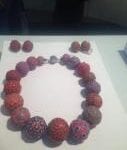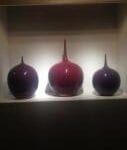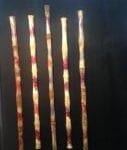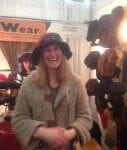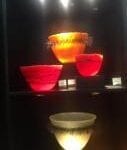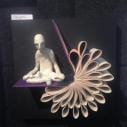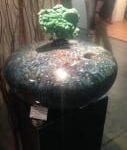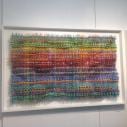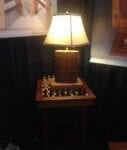Written by Thu Tran, MD,FACOG
March 5, 2016

When I started as an undergraduate student at Ohio State University, I was a French Literature major. I immersed myself in Sartre and Camus, Proust and Gide and the poetry of great poets like Villon and Prevert. I didn’t think about a future in the Sciences; I thought I was on my way to becoming a French professor lecturing on existentialism and reading French poetry on rainy days.
It was my father who turned the philosopher in me into a scientist. Like a typical immigrant, my father was realistic and practical.
“Who will be feeding you every day in the future?” he asked me one day.
Feeding me? Why would I need someone to feed me? I was perplexed.
“French professors might have a hard time looking for jobs! There are many unemployed PhDs in subjects like French and literature. Why don’t you read French philosophy and poetry in your free time when you have a better job?”
Fast forward more than thirty years later, I am now a very busy obstetrician/gynecologist. I still read a lot, but not French literature; there’s no more time for French literature. Fortunately, I love what I do and do not miss the rainy days I sat by some windows reading French poetry.
Every time I go to a craft show, such as the incredible American Craft Council’s show in Baltimore a few weekends ago, I am so glad not all artisans listened to their parents when they were younger, to go into a more lucrative career like medicine, law, or business. The world would have been full of stiff people walking around in bow ties and heavy glasses, speaking about supply and demand curves or tax shelter, zika viruses, and tort reform. Imagine being surrounded all day by Wall Street people lecturing us on how to maximize our investment porfolio; I don’t think it would be a balanced and interesting world.
At the American Craft Council’s show, I marveled at scarves created from bamboo fabric, earrings from lint (yes, lint, the fuzzy material from your dryer), clay and metal bead necklaces, woven glass art, wood carved vases that looked more like stones. The artisans who talked about the process of making their art work were no different in many ways from engineers, physicists or chemists. They were more carefree and adventuresome, less formal. Many of them expressed how difficult it is to make a living as an artist, although they have no desire to give up their passion for a stethoscope or a leather suitcase.
At the show, I met Dr. Clifford Lee, a former neurosurgeon at Hershey Medical Center who turned to pottery after he was burned out from medicine. He’s very happy now, pursuing his true passion and what he probably does best. Dr. Lee was among the artisans picked by the Clintons to have his work displayed permanently in the Renwick Gallery in Washington, D.C. Would it have been more prestigeous for Dr. Lee to remain a neurosurgeon rather than being a well known artisan?
I am glad Dr. Lee followed his passion. He, my friend Dr. Rachel Shreiber and I chatted about his career change. We chatted about the changes in medicine, with more regulations from the government, less payment from insurance companies, more expensive malpractice premiums and, of course, the problem with electronic medical records. Dr. Lee has no regret changing careers. I admire him for taking the courage to change. Many of us would not have that much courage. It is not easy for many of us to give up the lifestyle of a surgeon for that of a potter.
However, what is a better lifestyle? Is a neurosurgeon happier than a potter? Not necessarily, in Dr. Cliff Lee’s opinion. In the end, we have to love what we do and see the meaning of our job. As I chatted with a glass artist from Colorado after buying a gorgeous glass bowl from him, we agreed we should follow our passion. He lives in a rural area of Colorado where he loves hiking in the mountains. His observation of the surroundings, the blue sky and brown earth, inspires him to create his works. I, on the other hand, stay inside a building all day long seeing patients or delivering babies. My work gave me the money to buy his creation and helped him to stay with his passion. We balance the world that way.
One of my friends is learning ballroom dancing from an instructor who also teaches yoga. He was a Stanford undergraduate before getting a Harvard graduate degree. He was very successful in his career before venturing into his second career of dancing. He no longer works in his former science field, but he is very happy. He found his passion at last, teaching ballroom dance and yoga. All his years of schooling, however, were not a waste. My friend said his mind is brilliant, so he knows how to teach dance moves in a scientific way. He lectures her on how to dance using human anatomy as a model rather than merely showing her how to actually dance. Now, that’s a real balance between the arts and sciences.
On a wall in our home, a plaque from a Wisconsin potter sums up the importance of being passionate about what we do in life. It reminds me to live fully and follow a path I love so I won’t regret someday. I got this meaningful piece of art from one of the previous American Craft’s Council shows:
“DANCE As If No One Were Watching
SING As If No One Were Listening
LIVE Every Day As If It Were Your Last”
Tags:

